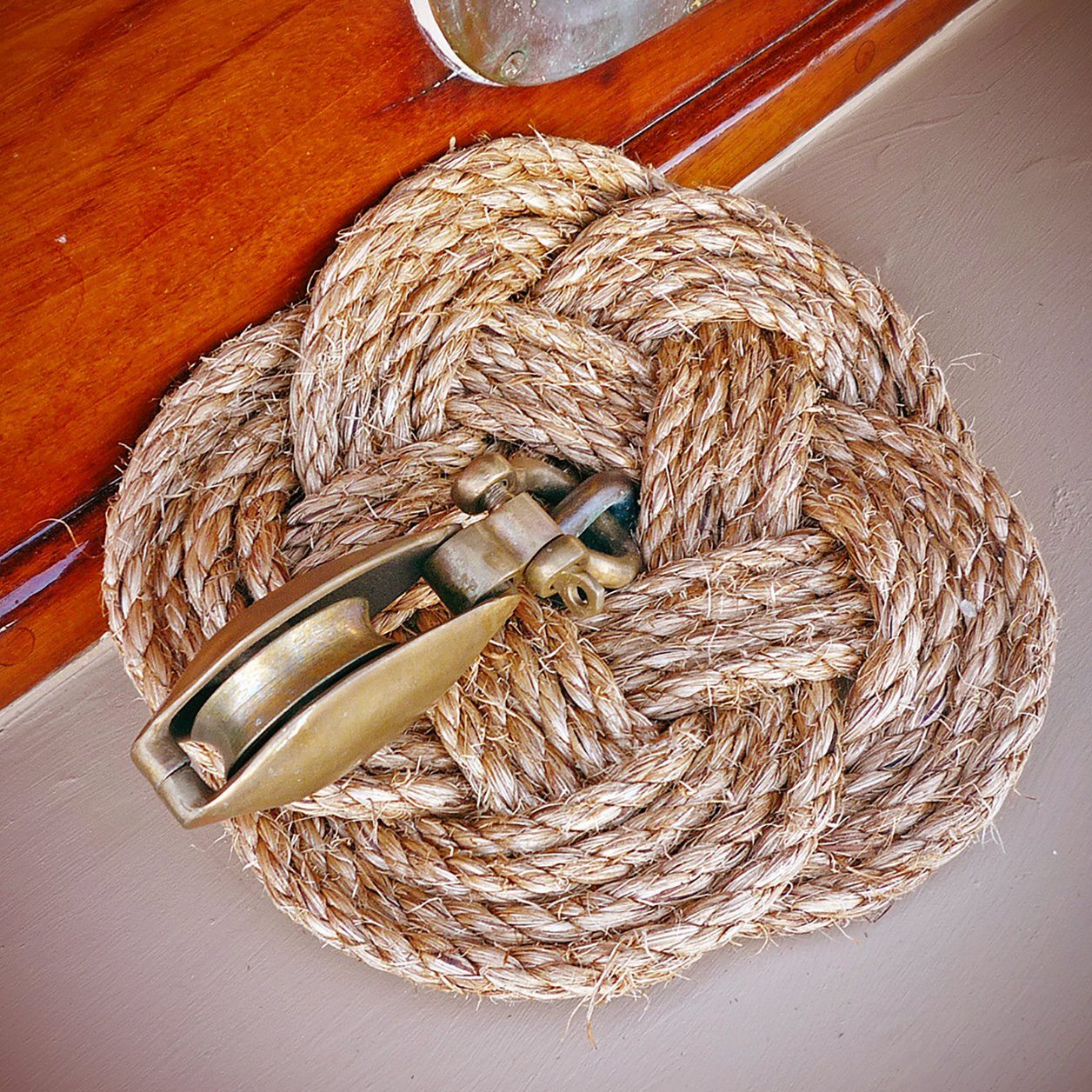Shop
Home Dec

Back In Time, Nautical Knotwork In Mystic
September 24, 2019 2 min read
The use of rope and knots date back to prehistoric times, mainly made out of natural fibers, hemp included. Later, ship's line was made out of manila hemp, a fiber obtained from the Abaca tree from the banana family. Much of the ship's gear was tied with manila and still is today on the vintage ships. Jill was photographing along the waterfront and found some examples of this marine gear still in use on ships and as home decorations.

The thump pad was used to protect the decks from the active sheet blocks used to trim the sails.
And what a fine sheet block this is!


Before plastics, fenders were made from rope, the fancier the knot the better. They are used to prevent the ships from hitting against the hard piers and pilings.

This beautifully tied fender appears to be permanently attached to the topsides of this large ships tender.

In Mystic, year round, you will see our manila wreaths on many doors.


Sometimes a simple knot is all you need.

Also known as the 'man-catcher', the net hanging off the bowsprit was designed to catch the sails as they dropped. Many sailors welcome the net while working the sails in heavy weather!

Peering into a local rope shed at an assortment of knotwork inside.


Left, Mystic Knotwork's doormats designed after the mats found on the older ships. They were used for chafing gear and to protect the deck from heavy items like anchors & chain. On right, fancy bow fenders and below, fenders in different patterns all found in our Mystic workshops.


Tying a fender at Mystic Knotwork.

Turkshead knots wrap pilings in Mystic Connecticut.
There are still many artisans out there carrying on the knot tying traditions of years gone by including us! Be sure to visit our workshops in Downtown Mystic and also check out the marine history that's around every corner as you stroll through Downtown!
Leave a comment
Comments will be approved before showing up.




